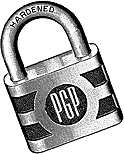
 |
Phil Zimmermann's PGP |
Excerpts from pgpdoc1.txt
--PGP is for people who prefer to pack their own parachutes.
PGP combines the convenience of the Rivest-Shamir-Adleman (RSA) public key cryptosystem with the speed of conventional cryptography, message digests for digital signatures, data compression before encryption, good ergonomic design, and sophisticated key management. And PGP performs the public-key functions faster than most other software implementations. PGP is public key cryptography for the masses.
Most alarming of all is the White House's bold new encryption policy initiative, under development at NSA since the start of the Bush administration, and unveiled April 16th, 1993. The centerpiece of this initiative is a Government-built encryption device, called the "Clipper" chip, containing a new classified NSA encryption algorithm. The Government is encouraging private industry to design it into all their secure communication products, like secure phones, secure FAX, etc. AT&T is now putting the Clipper into their secure voice products. The catch: At the time of manufacture, each Clipper chip will be loaded with its own unique key, and the Government gets to keep a copy, placed in escrow. Not to worry, though-- the Government promises that they will use these keys to read your traffic only when duly authorized by law. Of course, to make Clipper completely effective, the next logical step would be to outlaw other forms of cryptography.
Because the public key encryption algorithm is much slower than conventional single-key encryption, encryption is better accomplished by using a high-quality fast conventional single-key encryption algorithm to encipher the message. This original unenciphered message is called "plaintext". In a process invisible to the user, a temporary random key, created just for this one "session", is used to conventionally encipher the plaintext file. Then the recipient's public key is used to encipher this temporary random conventional key. This public-key-enciphered conventional "session" key is sent along with the enciphered text (called "ciphertext") to the recipient. The recipient uses her own secret key to recover this temporary session key, and then uses that key to run the fast conventional single-key algorithm to decipher the large ciphertext message.
There is a company called AccessData (87 East 600 South, Orem, Utah 84058, phone 1-800-658-5199) that sells a package for $185 that cracks the built-in encryption schemes used by WordPerfect, Lotus 1-2-3, MS Excel, Symphony, Quattro Pro, Paradox, and MS Word 2.0. It doesn't simply guess passwords-- it does real cryptanalysis. Some people buy it when they forget their password for their own files. Law enforcement agencies buy it too, so they can read files they seize. I talked to Eric Thompson, the author, and he said his program only takes a split second to crack them, but he put in some delay loops to slow it down so it doesn't look so easy to the customer. He also told me that the password encryption feature of PKZIP files can often be easily broken, and that his law enforcement customers already have that service regularly provided to them from another vendor.
Last Modified: 17 July 1996
St. Louis Unix Users Group - Linux SIG